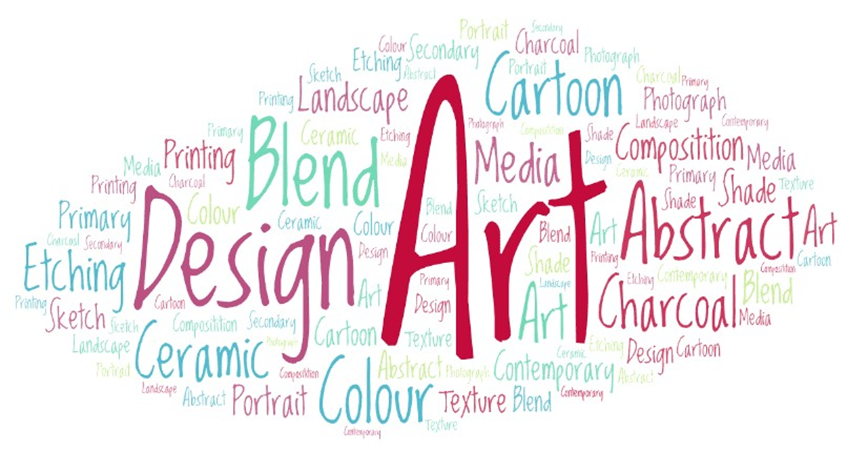Art and Design

Subject Leader - Mrs Nicola Rillie
Intent, Implementation & Impact Statement
Intent
At Weeton St Michaels Church of England Primary School, we value art and want all our children by the end of year 6 to have developed knowledge about artists, understand and apply a number of techniques and be able to appreciate and discuss art. Weeton uses the Learning Challenge Art Curriculum. This provides the progression model for art. The curriculum is divided into three areas: drawing, painting and sculpture. Each area provides the focus for each term. The curriculum covers all expectations of the EYFS foundation stage and the National Curriculum. Pupils are expected to reflect and build on prior learning. Underpinning all this is a key focus on improving our children’s communication skills, vocabulary, and ambition, so that all children will be artists, regardless of background, needs or ability.
Implementation
At Weeton, art is paired with design and technology. Each half-term the pupils will engage with a specific unit. The curriculum provides teachers with a teaching sequence with clear specific outcomes. We ensure that the pupils are able to understand the suggested artists linked to each module. The pupil will know about the context of the artist in addition to techniques, materials and artistic intentions.
|
Year Group |
Topic |
Artists |
|
EYFS |
drawing |
|
|
Years 1 and 2 |
Drawing |
Roger Hargreaves Piet Modrian David Hockney Claude Monet |
|
Years 3 and 4 |
Drawing |
Giorgio Morandi Mauris Denis Maurits Cornelis Escher |
|
Years 5 and 6 |
Drawing |
Cezanne Munch Henry Moore Banksy |
|
EYFS |
Painting |
Wassily Kandinsky George Seurat |
|
Years 1 and 2 |
Painting
|
Joan Miro Georgia O’ Keefe Claude Monet Paul Klee |
|
Years 3 and 4 |
Painting
|
Van Gogh Theresa Paden Georgia O’Keefe Henry Rousseau |
|
Years 5 and 6 |
Painting
|
Munch Van Gogh |
|
Years 1 and 2 |
Sculpture |
Li Hongbo
|
|
Years 3 and 4
|
Sculpture |
Mlle Hippolyte |
|
Years 5 and 6 |
Sculpture |
Robin Wright Henry Moore |
The Learning Challenge Art Curriculum provides teachers with related vocabulary, techniques, knowledge and skills required for each learning module. Pupils’ work is captured in sketch books and through practical work.
Children with Special Educational Needs and Disabilities
Our art curriculum is inclusive and ambitious for all learners, and we expect that all children should be successful, regardless of any special educational need. All learners are given full access to the art curriculum. Class teachers will adapt teaching inputs and provide additional support through scaffolding for any child who requires support. Strategies to support children with special educational needs or disabilities might include adaptation of resources, adult support, pre-teaching of vocabulary or content and alternative ways of recording understanding. Teachers will use the child’s pupil passport to ensure the correct support is in place.
Impact
Throughout their time at school, we strive to ensure that children will have acquired knowledge and understanding of a number of artists, many of which will be revisited later in secondary school. Furthermore, we will equip our children with a foundational knowledge which will enable them to discuss art and sculpture with confidence. Sketch books will capture the pupils’ progression of the application of knowledge and skills.
National Curriculum Expectations
Early Years
During the EYFS pupils explore and use a variety of media and materials through a combination of child initiated and adult directed activities. They have the opportunities to learn to:
- Safely use and explore a variety of materials, tools and techniques, experimenting with colour, design, texture, form and function.
- Share their creations, explaining the process they have used.
- Make use of props and materials when role playing characters in narratives and stories.
Key stage 1
Pupils should be taught:
To use a range of materials creatively to design and make products
To use drawing, painting and sculpture to develop and share their ideas, experiences and imagination
To develop a wide range of art and design techniques using colour, pattern, texture, line, shape, form and space
About the work of a range of artists, craft makers and designers, describing the differences and similarities between different practices and disciplines, and making links to their own work.
Key stage 2 Pupils should be taught:
- To develop their techniques, including their control and their use of materials, with creativity, experimentation and an increasing awareness of different kinds of art, craft and design.
- To create sketch books to record their observations and use them to review and revisit ideas
- To improve their mastery of art and design techniques, including drawing, painting and sculpture with a range of materials [for example, pencil, charcoal, paint, clay]
